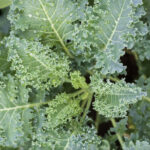 Recently, a longtime dream of mine came true.
Recently, a longtime dream of mine came true.
I’ve always wanted to travel and explore the world, but I had never left the United States. In early March, that changed, as I got to visit Costa Rica for about a week, touring coffee farms in the hopes of sourcing some product to bring back to Harrisburg.
The trip was hosted through Cafe Imports, one of the largest coffee importers in the industry. It’s my hope that, by sharing my story, you’ll better understand the coffee industry, the people who make it their passion to cultivate delicious coffee for us to enjoy at home, and what we can do to help them.
First, an introduction. I’m a two-year resident of Harrisburg and a freelance music columnist for TheBurg, But I’m also a full-time barista and coffee educator at Little Amps Coffee Roasters in the city. You usually can find me at the downtown shop by the Capitol slinging drinks and chatting up regulars. Cafes have this wonderful ability to bring people together, bonded by a common interest—coffee.
Ever since I became a barista, I’ve wanted to know as much about coffee as possible. Going into my first barista job, I didn’t know much of anything about it, other than how to work a Keurig. Over time, my knowledge grew, expanding beyond the everyday shop talk and moving more into the full circle of coffee: growing, producing, roasting, brewing and serving. Whether we think about it or not, coffee goes through a lot before it’s given to a customer. Right now, I’m going to focus on two important steps of the coffee life cycle that I got to know more about while on my trip—growing and producing.
Beautiful Symphony
Growing coffee is a labor of love that requires intention and passion to do right. It is also a science, taking into consideration factors like elevation, climate, weather and soil quality. Farmers like to experiment with where and how to grow specific types of coffee plants, which ultimately yields surprising differences in taste. A lot of farms that we visited had their crops nestled high in the mountains, living among other plants and flowers native to the area. One farm that we visited in the West Valley, Cerro San Luis, had about 14 varieties of coffee growing along the cliff sides and in fields high above the valley.
Most Costa Rican coffees that we tasted on our trip were honey- or naturally processed. These processes involve leaving differing amounts of fruit on the outside of the seeds while they dry. In part, this is done because the coffees grown there taste great using these processes. But they’re also used because they’re much cheaper than washing stations, which immediately remove the fruit on the outside of the seed for processing. I personally love natural- and honey-processed coffees because they tend to be more fruity and sweet.
My favorite farm that we visited was Finca Genesis, run by Oscar and Olga Mendez.
Their farm specializes in natural- and honey-processed coffees, although they produce some washed, as well. Their crops and drying beds are located high in the mountains, among other indigenous plants and animals, crucial to maintaining excellent soil to grow coffee, according to Oscar.
By embracing the natural environment around them and the plants that already grow there to provide shelter and pest control for the coffee, the couple consistently produces award-winning products. My favorite quote from Oscar Mendez perfectly encapsulates his view on how coffee should be viewed by us, the preparers and consumers.
“I have a lot of respect for cuppers and roasters, as they know that what they are tasting is a beautiful symphony—a culmination of the world’s natural beauty and the hard work of many different hands,” he said.
Personal Touch
Unfortunately, green farmers and producers aren’t earning their fair share of the profits. As roasted coffee prices have gone up in countries like the United States over the years, green coffee’s price has not shown much growth.
Before I left on my trip, I read an article from Standart, a coffee magazine covering stories on many aspects of the industry. The article, “What We Hope to Learn,” by Chad Trewick, outlines a summary of problems facing the industry among green growers and producers and what we should do in the coffee market as a whole. It made clear that there is a disconnect between those buying the coffee to roast and sell and those producing the coffee to be sold.
“Roasting and retail companies note higher costs of living and value additions that are exponentially higher than those of coffee producers—but many in coffee-producing countries argue that their increasing costs receive little attention in the face of the prices the market will pay,” Trewick wrote. “What seems clear is that, in order to sustain a certain quality to the consumer, we need to increase the value to producers or they will continue to abandon coffee production.”
He stated that a solution must be reached, whether it involves redistributing profit margins throughout the value chain or increasing consumer prices, or some other solution. Without a compromise and without incentive to continue growing and producing, the coffee industry will suffer from a lack of people at origin, resulting in less green coffee and, ultimately, less coffee to drink, and higher prices for the consumer.
I offer another solution to this problem through something I experienced shortly after my trip ended. Two exceptional people on our trip, Jared Truby and Chris Baca, co-owners of Cat & Cloud Coffee in Santa Cruz, Calif., proved to me that it takes a personal touch to keep the coffee industry going. Cat & Cloud Coffee has a podcast that is fairly well known among the coffee community. After finishing up the trip with us, they went on to visit Honduras for a few days. Tune into their podcast to hear their full account, but I’ll try to summarize a part of their trip that connected with me.
While traveling, they met with Damien Chavez, a second-year producer at his farm in El Cedral in Santa Barbara, Honduras. They had received some of his coffee awhile back that they had roasted and served in their shops, and it ended up being both a staff and customer favorite. On this trip, they were looking to meet with Chavez in person to create a relationship between grower and buyer. They then learned that he was looking to increase production and provide better quality control through a purchase of a de-pulper, an expensive piece of equipment. Truby and Baca ended up buying the equipment for him, which will allow him to continue to produce the amazing coffee that their customers relish.
Through this trip, it become clear to me that we should do our part to get to know the people at origin, invest in their livelihood, and encourage growth, however small the gesture may be. It has been amazing to get to know the incredible coffee community in Costa Rica, and it has opened my eyes to the possibilities of what relationships could be between the growers, the green buyers and the consumers at home. If farmers and producers can provide amazing coffee with limited equipment and money, just think of what they can do with more.
You never know how huge the impact may be to their future and to the future of coffee.
Visit Kait at Little Amps Coffee Roasters, 2nd and State streets, Harrisburg. For more information on the coffees they offer, visit www.littleampscoffee.com.





